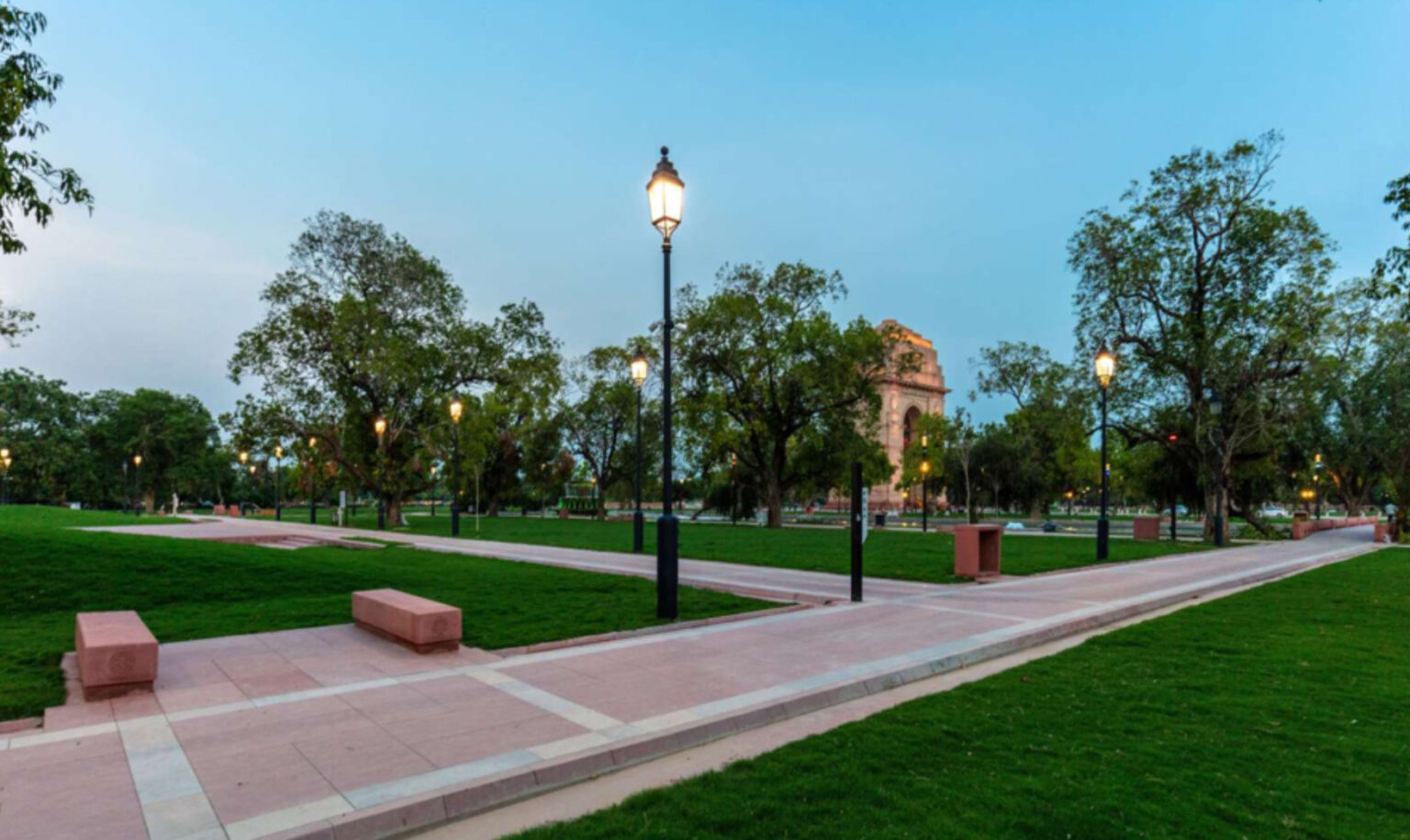PM Modi to inaugurate the new billion-dollar Parliament building on May 28. Four-storeyed structure accommodates 1,200+ MPs.

Image Source: centralvista.gov.in
PM Modi expected to inaugurate a new Parliament building in Delhi’s Lutyens area soon, as part of the Central Vista Redevelopment Project. Inauguration likely by end of month, coinciding with NDA’s nine-year tenure, according to insiders.
In 2020, PM Modi initiated the construction of the new building by laying the foundation stone. In September 2021, he personally visited the site and engaged with the workers present there.
During the foundation stone ceremony, Modi emphasized the long-standing requirement for a new building, stating that a modern India in the 21st century necessitates a new complex.
While acknowledging the role of the old building in meeting the country’s needs, he highlighted the new building’s ability to fulfill the aspirations of the nation.
Colonial Past Of The Present Building
The current Parliament House in India stands as a testament to the colonial era, having been designed by British architects Sir Edwin Lutyens and Herbert Baker. Its construction spanned six years from 1921 to 1927. Originally named the Council House, this architectural marvel initially served as the residence for the Imperial Legislative Council.
To meet the growing need for additional space, the Parliament building underwent significant modifications in 1956, when two floors were added.
Recognizing the importance of preserving India’s rich democratic heritage, we saw the establishment of the Parliament Museum in 2006. This museum aimed to showcase and celebrate India’s democratic legacy spanning an impressive 2,500 years.
Over time, the building had to undergo substantial alterations to align itself with the requirements of a modern Parliament. These modifications ensured that the infrastructure adequately catered to the evolving needs and aspirations of a nation embracing the contemporary era.
India’s present House, crafted by Lutyens and Baker, emerged during the colonial period. It went through various transformations, including the addition of floors and the creation of a Parliament Museum, to adapt to the changing dynamics of governance and to embrace the remarkable democratic heritage of the nation.
About The Parliament Building
The new building, occupying an expansive area of 64,500 square meters, boasts a distinctive triangular shape. The four-storey structure is designed to accommodate 1,224 Members of Parliament (MPs). It features three primary entrances named Gyan Dwar, Shakti Dwar, and Karma Dwar.

Image Source: centralvista.gov.in
Notably, the new building incorporates separate access points for VIPs, MPs, and visitors. Within its premises, there will be a magnificent Constitution Hall, serving as a tribute to India’s democratic heritage. The building will also encompass a parliamentary lounge, library, multiple committee rooms, dining areas, and ample parking facilities.
The current building was not originally designed to accommodate a bicameral legislature for a fully democratic system. The number of Lok Sabha seats has remained unchanged at 545 since the 1971 Census-based delimitation. However, it is expected to significantly increase after 2026 when the freeze on the total number of seats expires. The seating arrangements are cramped and inconvenient, with no desks beyond the second row. The Central Hall can only accommodate 440 people, exacerbating the issue during Joint Sessions.
One notable highlight is that the original copy of India’s constitution will be prominently displayed at the heart of the Constitution Hall. Additionally, portraits of eminent leaders such as Mahatma Gandhi, Jawaharlal Nehru, Subash Chandra Bose, and former prime ministers will grace the walls.

In September of the previous year, PM Modi officially inaugurated the newly named ‘Kartavya Path,’ a three-kilometer stretch between Rashtrapati Bhavan and India Gate, marking an important milestone in the capital’s landscape.
Categories: National News
Tags: Central vista , parliament, NDA, Lutyens, MPs












